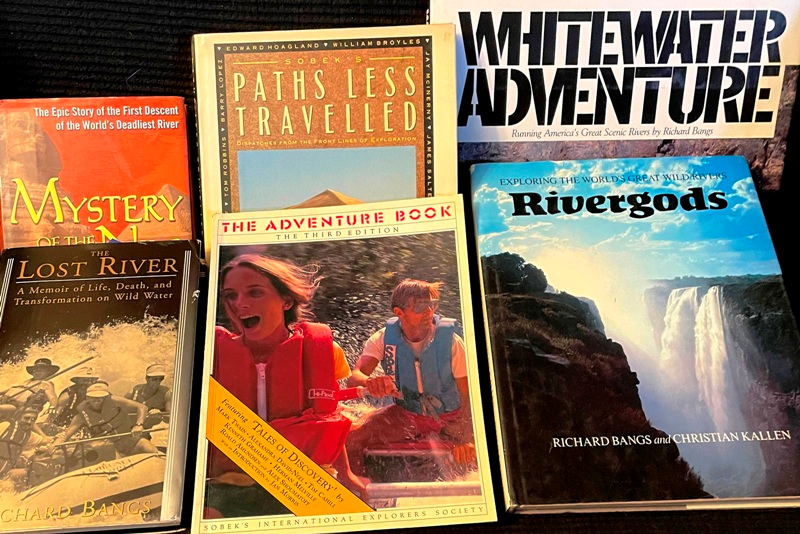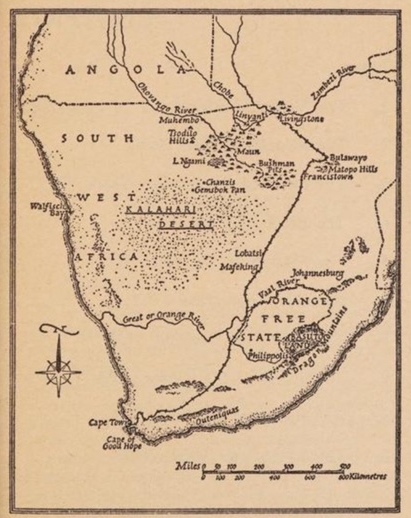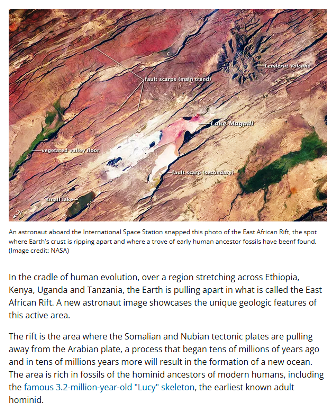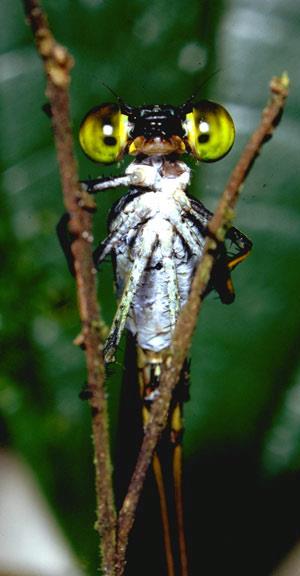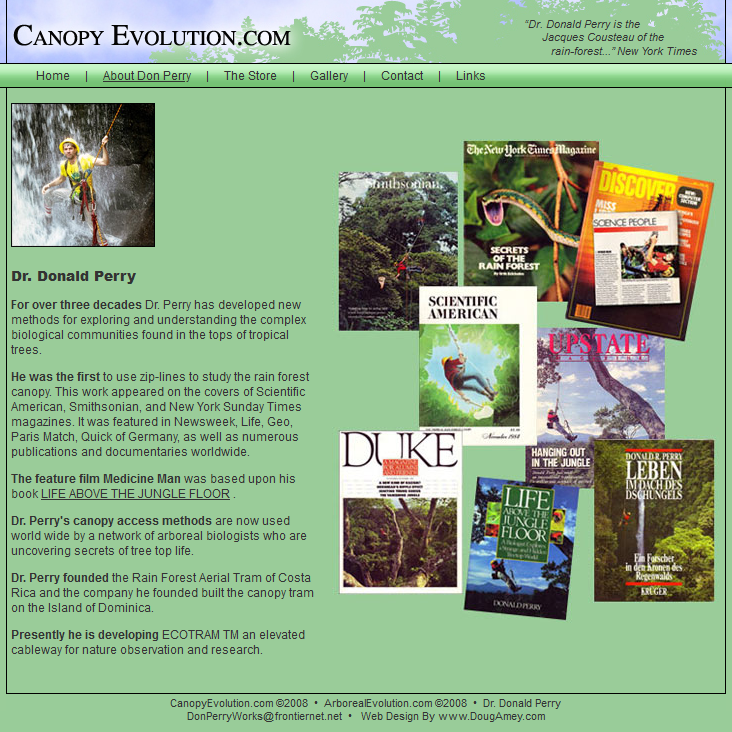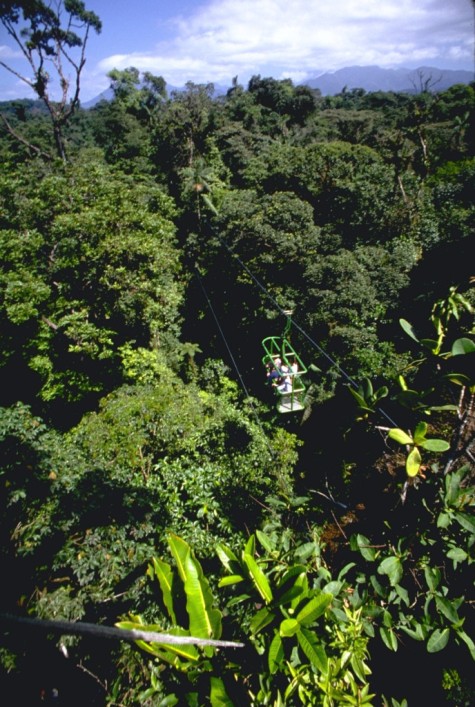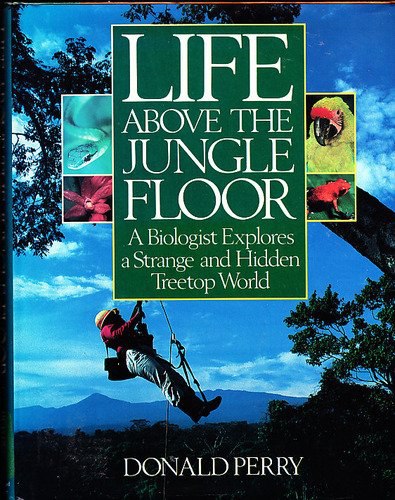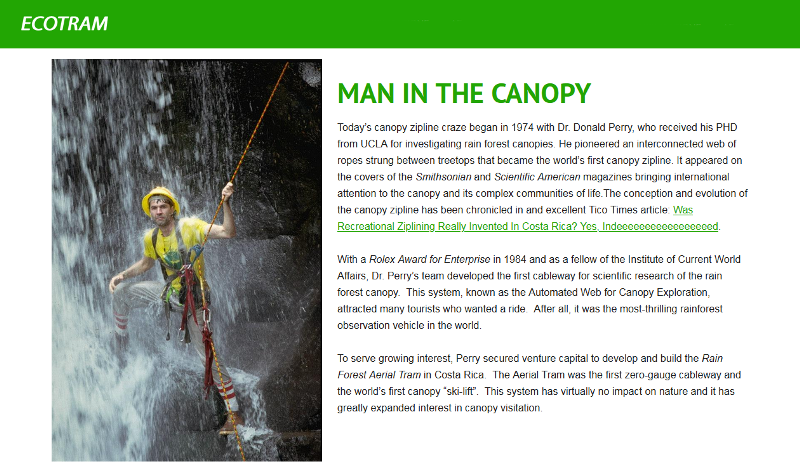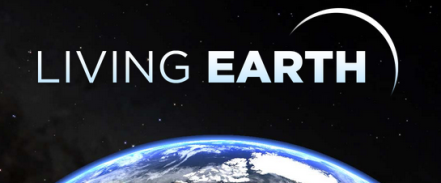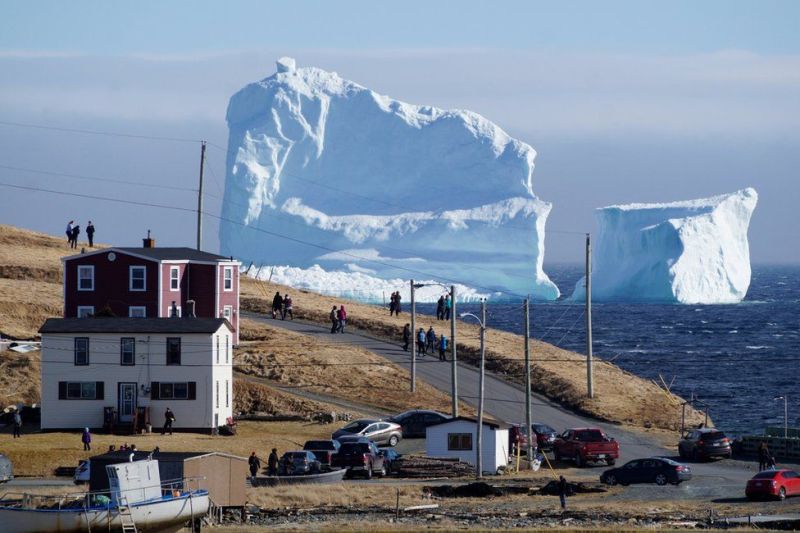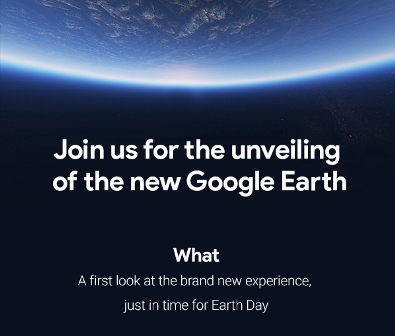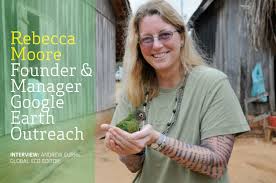Ecotourism
Intro: A few thoughts on Ecotourism, in the early days:
Back in the day, when your GreenPolicy360 Siterunner had left NYC publishing for Hollywood producing, one of the films that our company put together was with LaVar Burton. He had just come from the 1977 "Roots" Miniseries, the out-of-Africa story of Kunte Kinte, as played by LaVar.
Later LaVar became involved in a back-to-Africa as he joined up with friends of mine, a recently formed eco-adventuring company that took the name of SOBEK. LaVar tells a great story about almost getting eaten by a croc in Africa, on the Zambezi, as the SOBEK attempted a first-ever river run of the river below Victoria Falls.
LaVar's story is true, I think, though that was many years ago and since then much water has flowed down one of the world's greatest rivers. And then there's the whole eco and tourism thing that has gone from an idea to a generational phenomenon.
Take SOBEK and its OARS. Richard may have 700 stamps in his passport by now...
Richard was a friend from back then, who I helped with the publishing launch of his ecotourism whitewater adventure company. He had invited LaVar along to the first whitewater descent of the Zambezi River, bad, never before oared rapids below the Victoria Falls and, until he almost got eaten, LaVar was along for the ride.
"Until" is the key word. It seems that not far from "putting in" and beginning the adventure with the team of explorers and assistants, who were along for safety, that the kayak of LaVar experienced an encounter. As told, a very large snout with very large teeth, came out of the water suddenly and puts it teeth through a kayak next to LaVar. He rapidly paddled to shore, he proceeded to call in a helicopter from shore, and soon was swept into the sky.
The whitewater team wished his a good-bye, then proceeded to complete their journey down the Zambezi, without losing anyone or having anyone eaten.
There's a sequel, a south of the Zambezi sequel, an "Eco" sequel.
We, humanity, came out of Africa and now we're looking at images of the Rift taken from the International Space Station in a flat, desolate, barren flatlands that's south of the Zambezi.... in the San world of the indigenous people, the aborigine. Some say these people are the oldest old tribe of ancients left in this modern world.
I used to argue with Don Perry about the beginnings, he the scientist talking of prehensile thumbs and our ape family similarities, then switching mid-story to 'feelings' he sometimes suddenly had when swinging up in the treetops, up above in the jungle canopy. Then I'd push and ask again, "when did we come down? and why did we come down from the safety up above?"
Don's theories ranged from mainstream to uniquely Don's (as far as I knew). His hunting by dropping rocks then climbing down for the fruits of successful hunts was one of my favorites.
And so it goes...
Today, we hear about old, old, old Africa and even though the story involves colonial explorers looking for lost tribes (as I read about back in those days of Bangs and his many rivers run throughout the world, and the new ecotourism adventuring we were doing, in different spheres, pushing into new visions of geo-adventures and experiences. With me there was also the rainforest canopy and Don Perry, a National Geo hero, a 'Jacques Cousteau of the Richest Biosphere' on Earth, adventuring into never-before explored upclose 'real jungle'. Don, as a PhD scientist from UCLA, was also inventing a canopy web, engineering it, testing it, then over years and decades introducing it for eco-visioning. Don has brought people from around the world into the tops of the jungle, the rainforest, the living earth.
From Africa to the Americas, Costa Rica
The idea was to introduce the modern world to the old world. A goal of ours, as pioneers was to save the old world by showing the modern world how valuable the old world was, by experiencing it, up close and personal. Our Living Earth had to be preserved and protected. Eco-experiences, eco-adventuring, eco-tourism (ecotourism) brought new ways of seeing, opening eyes to appreciating and wanting to save the world.
Life Above the Jungle Floor: A Biologist Explores a Strange and Hidden Treetop World
Simon and Schuster, First Published in 1986
5.0 out of 5 stars A MUST HAVE!!
Reviews @Amazon
THIS is a book I have cherished for over 25 years! I encountered it whilst beginning my journey towards obtaining a degree in Zoology, later specializing in Ornithology, the study of birds, and bird song, and how birds use altitude and plant / tree saturation to communicate in different ways and to change the sound of their calls and songs, as well as the distance they traveled through the air to their destination, to another bird. This Author clearly is an expert, is passionate in his field and takes us on a fascinating journey into, and within, the rainforests of the world. He begins on the floors of the forest, telling us what lives there and why. He speaks of the rainy season, where water rises so high in the jungle that it can cover 300 ft. trees! And, during this time, the beautiful, rare, endangered, and magical to tribal shaman, pink dolphins appear. They have traveled perhaps tens to hundreds of miles from salty waters but have adapted to tolerate the fresher waters of the jungle. They are pink due to their diet that consists partly of crustaceans and they take on their pink color. The Author then goes on describing levels of the jungles up the heights of the tree trunks, where the orchids grow only from one perfect seed, landing on one opportunistic spot, that just happens to be perfect for growth. Orchids are some of the rare plants that grow naturally on trees, in crooks of branches, in little piles of dirt and plant waste, and not on the ground. He brings you up higher and higher, until he is in the uppermost canopy, where most of the activity is of birds. As far as I know, the pictures in this book have not been obtained by any other scientists, for many years since this book was written, but may exist now. This book is a MUST for anyone! It takes us on a magical journey, to a place we may never have the chance to see! It makes us appreciate the wonders of our world. It gives us the hunger to protect these places, even if we never see them, but just to know.... to have the comfort, they still exist, for others, for our children, for distant generations... It is absolutely one of the most treasured things I own. I will share it with my children one day. Buy it, read it. Let it take you to a place of wonder. Let it light that spark for you to travel. Let it help you to remember to protect our world. Ranching has greatly reduced the size of these areas, as it has become a lucrative way of life in some areas. Become passionate enough to keep track of the situation, to help if you can. There are a couple of very reputable organizations that help protect areas like these by actually buying the land via donations. That is how I found out about the Nature Conservancy. In my opinion they have grown so much since their beginning and saved so many rare places like this. I have no association with them. This is just my personal opinion. But when you read this book, you will not be able to hold yourself back. You will feel compelled to do something to help. This book is that good! Teachers! Parents! Friends! Get this book! Teach our future generations! Show them the wonder, the strength, the mystery, the beauty our world has to offer! Take them on this journey with you! I promise you, you or they, will never forget this book. It's that good! Enjoy it! And thank you for reading my lengthy review! This book deserves it!
January 2013
On Top of the World
Looking Out with Don Perry, the 'Jacques Cousteau of the Rainforest Canopy'
by Steve Schmidt - GreenPolicy360 Siterunner
I want to say a few words about Don Perry, Dr. Perry, who swung in and posted a couple comments yesterday, thirty plus years after we first started publishing Don's pioneering work 'up above'.
Be aware, Don is not your standard scientist who has dwelt in academia, collecting accolades and plaudits for his lifetime of work and explorations of the bio-universe. Don has gone on from UCLA to literally change the way we see our world.
As I used to say about Don, when we were working together back when I lived in LA and he was starting his career that would revolutionize the science of tropical forest study, Don is unique in his field, he's a pioneer (and "bioneer"), he's an explorer, an inventor. Don invented new techniques and methods for ascending and studying the 'real jungle', up above far from LA's glam, and proceeded to enable and show us what the resplendent, amazing rainforest, the richest biosphere on earth, the canopy, was like and it was wonderful... first-ever pictures and reports and science from on high. I was privileged to help as his representative and we saw Don's visions reach audiences around the world as he opened eyes to the eco-wonders of the environment we live in and the world we came from long ago, that is, if you believe in evolution... Don was a "Jacques Cousteau of the Rainforest Canopy." I meant the words when I said them and still do. Don's pioneering work has been featured in Scientific American, National Geographic, Smithsonian, New York Sunday Times magazine, Life, Newsweek, Paris Match, Quick of Germany, Popular Science, and many more popular and scientific media.
I have to say that Don's career is one-of-a-kind, an unparalleled feat of brave, courageous ascents and creative imagination and engineering that followed, from Topanga canyon w/ Southern Cal beginnings, to cross-bows firing lines and stringing canopy webs and going up himself, then a first-gen automated canopy exploration web system, to the first aerial, eco-trams for non-scientists and tourists and eco-preneurs, and zip line projects for all of us world over, Don has been reaching up for decades, surviving close calls and still going strong.
Don has changed the way we see "the jungle". I can't remember how many times I've explained over the years that the jungle isn't the way most everyone thinks about it -- it's not about Victorian-like stories, there's no machete at the ready, natives chopping away and a gun slung on a strap on your shoulder like Stanley and Livingston or Tarzan or Sheena, Queen of the Jungle, Hollywood's film versions of the jungle. Rather, the real jungle's up there, the richest biosphere, 60, 80, 100, 120 feet up and higher (think Amazon and meters if you want.) It's really up above, what I used to call "the cradle of new life forms", where evolution is still happening and happening fast... we're talking about life forms few have seen and studied, a gazillion types and insects and small creatures and green species, varieties, animals whose lives are lived out quickly and generation to generation in a geo-minute or -second, survival or not and adaptation happening in evolutionary timelines.
We now are seeing and witnessing and in the past few decades realizing the impacts and dangers to the rain forests, even before we discover the genetic environments we're wiping out as we clear cut and burn and rip away, humans interjecting profound change by destroying the rain forests worldwide. This story that science is now beginning to bring to us stands in contrast to green biodiversity and saving life, a pro-life position, where science and voices like Don's and those of us who've lived the life of being green are telling us - ACT, ACT NOW, for our own global health and well-being, act to save, be "conservative", truly conservative, not "crazy conservative", pay attention to the facts, conserve, conserve now, fast.
Don was (and is) an original eco-explorer who realized the need to see what is at stake, he saw and he created an EcoTram, as it's now called, one of the first eco-explorer ventures designed to teach up close.
Don Perry's devoted himself to the work, taking science to the next step, acting on his discoveries. The eco-trams jump started eco-tourism up above in the canopies, as they carry eco-tourists thru the tropical forests where they can come eye-to-eye with life's rich diversity. In Costa Rica as one of his trams, a first, has been running near San Juan, for years w/ travelers and adventurers from Europe, the US, Asia and around the world experiencing personally the real, diverse variety of life in the canopy and, as Don and our hopes began to come to be, all of these first-timers could become evangelists, returning home to tell their stories of what the real world is like up there and why it's worth saving. There's no better way to teach than up close, 'hands on', as Mr. Wizard, Don Herbert would tell me when I was editing his work. Up close in the canopy, eco-visiting people can sense, feel, touch, smell the richness and truly appreciate what it is, what we are trying to save when we talk about saving the tropical forests, the lungs of the earth and much more. It's about Gaia, it's about breathing and much more.
Thank you Don
Thank you for going up there in the old days and ever since.
The trees are where we came from... spires, in'spiration' we 'aspire' to a 'heaven' up above, cathedrals spire above, our language imagining goodness as we look up... and as we've evolved since our descent, let's rediscover what we left, rich, very rich and needed life.
Thank you, you've battled and your new directions, your work on more e-trams, your questioning of human evolution beginning w/ us as the "greatest climbers", your thoughts here on the future of sea rise as you wrote about yesterday on my my FB wall as I mulled about Doonesbury's myFacts take on global warming deniers, (especially pertinent to us folks who live barely above sea level), I want you to know you're truly appreciated.
🌎
🌎
https://upload.wikimedia.org/wikipedia/commons/8/85/Isla_del_Coco-chatham_beach.jpg
Consider traveling to 'Environmentally-friendly' countries for your next vacation or adventure
Among the many definitions of "ecotourism / eco-tourism" are the more 'strict' definitions (see Wikipedia definition below) and more 'loosely labeled' definitions of what constitutes ecologically aware tourism. Ecotouring now includes ocean cruises in the Arctic and Antarctic to witness climate change, group adventure expeditions to remote fast-changing regions, and individually planned trips north and south to the mountains and coasts to see recent environmental changes (see above example in Newfoundland, Canada).
Watch #ClimateChange Icebergs float real-time as you watch
In the near future, 'virtual ecotourism' will enter the lexicon, as virtual reality capabilities added to programs like Google Earth enable 3D / immersive touring via headsets and data libraries gathered from locations as diverse as the biospheres within rainforest canopies, ocean kelp forests and seascapes of seagrass, 'tiny blue-green' environments producing essential oxygen for the planet, to astronaut perspectives who speak of an "Overview Effect" as they take in the overwhelming cognitive experience of floating above the Earth.
○
As our website rides on a MediaWiki platform, here's a Wikipedia definition of Ecotourism:
According to the definition and principles of ecotourism established by The International Ecotourism Society (TIES) in 1990, ecotourism is "Responsible travel to natural areas that conserves the environment and improves the well-being of local people." (TIES, 1990). Martha Honey, expands on the TIES definition by describing the seven characteristics of ecotourism, which are:
- Involves travel to natural destinations
- Minimizes impact
- Builds environmental awareness
- Provides direct financial benefits for conservation
- Provides financial benefits and empowerment for local people
- Respects local culture
- Supports human rights and democratic movements such as:
- conservation of biological diversity and cultural diversity through ecosystem protection
- promotion of sustainable use of biodiversity, by providing jobs to local populations
- sharing of all socio-economic benefits with local communities and indigenous peoples by having their informed consent and participation in the management of *ecotourism enterprises
- tourism to unspoiled natural resources, with minimal impact on the environment being a primary concern.
- minimization of tourism's own environmental impact
- affordability and lack of waste in the form of luxury
- local culture, flora and fauna being the main attractions
- local people benefit from this form of tourism economically
○ ○ ○ ○ ○ ○ ○ ○ ○ ○ ○ ○ ○ ○ ○ ○ ○ ○ ○ ○ ○ ○ ○ ○
SJS: The Costa Rica rainforest canopy web project of Don Perry beginning in the 1980's was one of the first planned ecotourism projects.
One of the key goals was to open up to 'the world' a direct experience of the rainforest canopy, which previously was inaccessible in its unrivaled biodiversity and beauty.
In this way we believed visitors' awareness would more fully carry on with them in their home communities and policies and funding would begin to preserve the unique and critically important flora and fauna comprising one of the richest biospheres on Earth.
○
- | Whole Earth Visions https://greenpolicy360.net/images/1969_beginnings_of_the_modern_environmental_movement.pdf
- | Earth Observations http://www.greenpolicy360.net/w/Category:Earth_Observations
- | Earth Science from Space http://www.greenpolicy360.net/w/Earth_Science_Research_from_Space
- | Earth Mapping-GIS http://www.greenpolicy360.net/w/Virtual_Earth
- | Blue Marble Collection http://www.greenpolicy360.net/w/Blue_Marble_Collection
- | "Earthrise" http://www.greenpolicy360.net/w/File:Apollo.jpg
- | Overview Effect http://www.greenpolicy360.net/w/Overview_Effect
- | EarthPOV.com http://www.earthpov.com
- | Hello Earth http://www.greenpolicy360.net/w/HelloEarth
- | "Pale Blue Dot" http://www.greenpolicy360.net/w/Pale_blue_dot
- | Earth360 http://www.greenpolicy360.net/w/@Earth360
- | Whole Earth http://www.greenpolicy360.net/w/Whole_Earth
Earth Mapping Developments & Updates
One of GreenPolicy360's favorite "planet citizens"
Google Earth Outreach empowers you to create positive change for people and the planet with Geo tools.
Bioneers and 'bioneering'...
Rebecca Moore, bringing us Google Earth / Earth Outreach
Journey On!
With 'Virtual Globe', a Quotidian Day Hike Works
“The story of your family history, the story of your favorite hiking trip – it could be anything."
-- Google Earth Director Rebecca Moore.
Ecotourism takes a virtual leap ...
Help to protect and save Indigenous Peoples ....
Google Earth is opening up this functionality... teaming up with primatologist Jane Goodall to tell stories of the Yanomami peopleCinta Larga and the Boa Vista Quilombola. Utilizing maps for story-telling is just the beginning of the story, of how we can begin to see our world/planet, and the journeys and changes we make, over time. Our new virtual tools are just beginning to come into view...
🌎
- Africa
- Amazonia
- Biodiversity
- Bioneers
- Biosphere
- Brazil
- Climate Change
- Costa Rica
- Countries
- Earth360
- EarthPOV
- Earth
- Earth Art
- Earth Imaging
- Earth Science
- Ecology Studies
- Ecoregions
- Ecotourism
- Environmental Protection
- Evolutionary Biology
- Forests
- Geology
- GreenPolicy360
- Green Best Practices
- Green Business
- Green Marketing
- Green Politics
- Indigenous Peoples
- Maps
- Natural Capital
- Natural Resources
- Planet Citizens
- Planet Citizens, Planet Scientists
- Rainforest
- Rivers
- Sustainability
- Sustainability Policies
- Virtual Earth
- Virtual Planet
- Water
- Whole Earth
- Wildlife
- Youth
